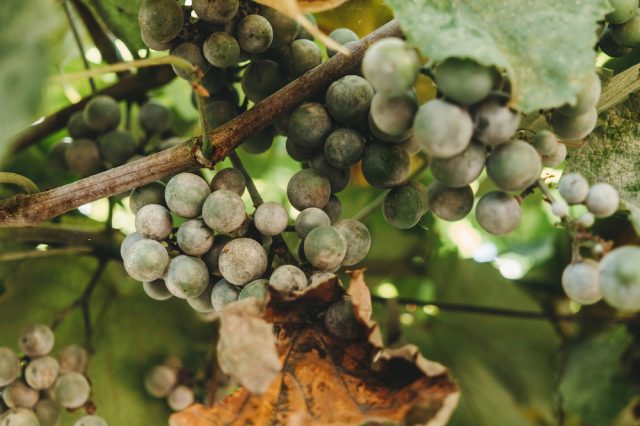This website uses cookies so that we can provide you with the best user experience possible. Cookie information is stored in your browser and performs functions such as recognising you when you return to our website and helping our team to understand which sections of the website you find most interesting and useful.
Weather posing challenges for English vineyards
2024 has already posed challenges for English vineyards with Essex, the fifth-largest grape-growing region in the UK, experiencing a milder winter which caused buds to appear earlier than usual.

This was followed by a surprise frost in April, leading to significant crop damage. Paul Edwards, owner of Saffron Grange Vineyard, reported to the BBC “significant losses” in some Chardonnay vines despite the team’s best efforts.
This erratic weather underscores the challenges of growing grapes in a cool climate. While the rest of the spring looks frost-free, vineyards continue to adapt their methods to cope with these changing conditions.
Edwards said that buds were bursting two weeks earlier that last year, making them vulnerable to frost damage, but it would continue to adapt its methods to cope with the weather and changing conditions.
He said: “The wet weather conditions delayed us in getting started with winter pruning. No-one ever said that growing grapes in a cool climate would be easy.”
Impacts
The increasing temperatures and changing weather patterns have both positive and negative impacts on viticulture in England. Warmer growing seasons have made it possible to ripen grape varieties that were previously challenging, such as Pinot Noir and Chardonnay, which are essential for sparkling wine production.
Researchers from the University of East Anglia have suggested that over the next two decades, southern England’s average temperatures during the growing season could increase by up to 1.4%, creating optimal conditions for producing high-quality still red wines. This change could see regions like Kent, Sussex, and Hampshire expanding their repertoire beyond sparkling wines to include robust reds.
However, the weather’s volatility presents challenges. For instance, the wet and humid conditions during the summer of 2023 led to increased disease pressure, requiring vigilant vineyard management to prevent issues like mildew. Despite these challenges, many winemakers have noted that strategic vineyard practices and investments in technology have helped mitigate adverse effects, ensuring high yields and quality.
Frost challenges
But last year was also described as exceptional by several English winemakers. Producers reported record yields, with some vineyards harvesting significantly more grapes than in previous years. For example, Nyetimber, one of England’s largest sparkling wine producer had one of its largest harvest ever compared to the previous year.
Similarly, Ridgeview Wine Estate in Sussex experienced its largest harvest to date, with particularly impressive results from Pinot varieties. It attributed the success to a burst of sunshine in September, which was critical in ripening the grapes after a wet July.
Producers are also focusing on sustainable viticulture practices to help beat the weather. For example, careful canopy management and monitoring weather conditions are mitigating disease risks, particularly in wet and humid seasons.
Tourism
There is also concern that wine tourism, which has become a vital component of the English wine industry, could be impacted by the weather.
Tourism-related activities, such as wine tasting tours and weddings, now account for nearly a third of total vineyard income in the Eastern region.

